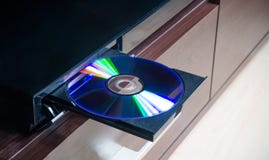Buenas:
También queiro saber lo que buscas, saber si el lector está cerrado o abierto el programa, sea del lenguaje que sea. Por ejemplo, si meto con la mano la bandeja, entra solo y el programa sabe cuando está abierto la bandeja o no. Si tngo l abandeja abierta por Windows, ejecuto después el programa, que detecte si está abierto. Los programas que puse arriba no lo sabe.
¿A lo mejor sysinfo vale para lo que buscas?
Veo que en status has comprobado que no vale.
La cuestión es saber si esa posibilidad que buscamos existe.
Saludos.
También queiro saber lo que buscas, saber si el lector está cerrado o abierto el programa, sea del lenguaje que sea. Por ejemplo, si meto con la mano la bandeja, entra solo y el programa sabe cuando está abierto la bandeja o no. Si tngo l abandeja abierta por Windows, ejecuto después el programa, que detecte si está abierto. Los programas que puse arriba no lo sabe.
¿A lo mejor sysinfo vale para lo que buscas?
Veo que en status has comprobado que no vale.
La cuestión es saber si esa posibilidad que buscamos existe.
Saludos.


